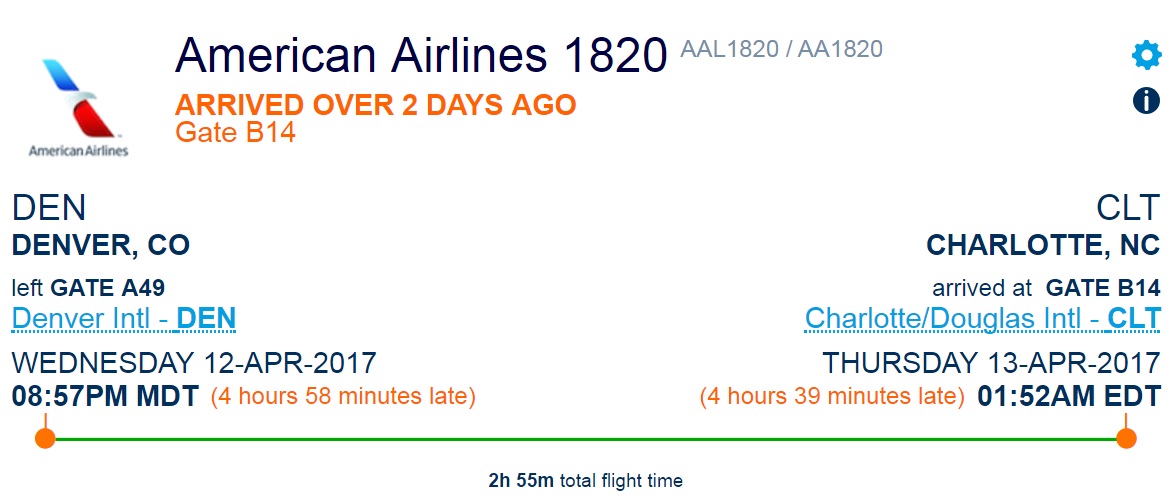The indispensable Aviation Herald covers American Airlines flight AA1820 from Denver to Charlotte on Wednesday.
The Airbus A321 was in its takeoff roll when the thrust reverser on the plane’s right engine opened. The crew rejected takeoff when the aircraft was about 4600 feet down the runway. Denver has long runways, they were on runway 8 which is 12,000 feet long.
A passenger on board in the window seat was filming takeoff, and then — pop.
Aviation Herald reports,
Emergency services were alerted for a stuck thrust reverser and possible flat tyre. Emergency services reported all tyres were still inflated.
Passengers were re-accommodated on a replacement Airbus A321 and arrived in Charlotte after a 4 hour 40 minute delay.

As of this writing, three days later, the plane remains on the ground in Denver.
(HT: Ken A.)


aborted take-off is correct terminology, not “rejected takeoff”
How could this even happen? Has it ever in flight?
@carlos The internet doesn’t agree – https://en.m.wikipedia.org/wiki/Rejected_takeoff
What was that explosion? Seems kinda weird for a thrust reverser issue to explode like that?
@ Carlos: Rejected take-off IS the proper terminology in airline speak. “Abort” is the term used by the U.S. Air Force. I speak as an airline pilot and former USAF pilot. Also it it more likely that the engine suffered a compressor stall or failure, then the reverser was deployed by the pilot as part of the reject sequence. It is extremely unlikely that a reverser deployed un-commanded.
An engine thrust reverser suddenly kicking in would likely be disastrous once the plane is in the air. Can you imagine just after leaving the runway on the climb out, when both engines need full thrust to gain speed and altitude, one engine suddenly goes into reverse? Some comments in the thread question whether the thrust reverser really engaged or not.
If it had happened after takeoff, the result could have have been front-page (airliner crash) news… so fortunate that it wasn’t. Would be very interested to hear the findings on that.
C’mon Gary, I expect better of you. Stick with your expertise. (“Gary Leff is one of the foremost experts in the field of miles, points, and frequent business travel”). The “puff” of flame is an indication of an internal engine malfunction which could have been caused by a multitude of issues such as bird or foreign object ingestion along with scores of internal issues. Not uncommon problems and trained for constantly. There is no indication from the video that thrust reverse was deployed on the engine. From the vantage point of the video, you can’t see the engine. What is visible are the “spoilers” (anti-lift devises) that deployed, either manually or automatically as part of the rejected take-off sequence.
@Greg. Yes, tragically. Laudair 767 in 1991. No survivors.
Not a T/R issue if you ask me there is virtually zero yaw moment at all (it would have been quite violent at that speed) more likely a compressor stall.
More likely a surge or bird strike. Even the reverse door got loose and opened, there won’t be any explosive reactions
Its 2017 and the video quality is horrible. Did they record this with a potato??